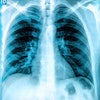The World Health Organization (WHO) defines osteoporosis as a T-score of at least 2.5 standard deviations (SD) below the average bone mineral density (BMD) of young healthy white women at peak bone mass. But this measurement doesn't take into consideration the part that ethnicity plays in the incidence and prevalence of osteoporosis.
A group from the University of Illinois at Champaign-Urbana performed a meta-analysis of major osteoporosis trials and compiled the most current information about race and osteoporosis. They also noted some of the shortcomings of these studies, and what direction future research should move in.
"Considering osteoporosis to be an aged white woman's disease is an outdated practice," wrote Dr. Pooja Pothiwala and colleagues. "Understanding bone health from (a) multifactorial perspective will enable prevention and treatment efforts to be targeted in an ethnically appropriate manner" (Journal of Women's Health, July 2006, Vol. 15:6, pp. 709-719).
Pothiwala is from the university's department of internal medicine. One of her co-authors, Ellen Evans, Ph.D., is from the department of kinesiology and community health and nutritional services.
According to the National Health and Nutrition Examination Survey III (NHANES), 35% of white women are at risk for osteoporosis of the hip, spine, and forearm. Based on another study, the National Osteoporosis Risk Assessment (NORA), Native American women have the same risk as white women, while black women have a decreased risk. While these studies provide proof that all women are at risk for osteoporosis, determining which one has the highest risk has been difficult, the group stated.
Some studies have shown that white women have the highest fracture rate, while others have indicated that black women have the lowest. Pothiwala's group explained that differences in bone dimension may be one reason why, with blacks having shorter vertebrae and wider long bones. In a catch-22 situation, the prevalence of obesity among black women may protect them against osteoporosis.
In terms of disparities in BMD, studies have shown increased BMD in black women, possibly because they excrete less calcium, so bone turnover is slowed. On the other hand, low bone density is prevalent in Asian women, especially in Japanese women. However, fracture rates are lower in Asian women, possibly because shorter hip axis length serves as a protective agent (Calcified Tissue International, August 1999, Vol. 65:2, pp. 100-105).
One of the factors that contribute to disparities in osteoporosis risk factors is calcium intake, the group said. Data from the Hispanic Health and Nutrition Examination Survey indicated that Hispanic and white women have similar calcium intakes, which are higher than those of non-Hispanic black women. According to a 2005 study, black girls showed a 14% reduction in calcium intake in the third and eighth grades compared to a 7% reduction for Hispanic girls in the same age group (Journal of the American Dietetic Association, June 2005, Vol. 105:6, pp. 938-945).
Another dietary shortcoming is a lack of vitamin D intake, especially in black women. In the Boston Low Income Elderly Osteoporosis Study (BLEOS), published in 2000, the mean 25-hydroxyvitamin D3 level in black women was 45 nmol/L versus 65.9 nmol/L in white women. The optimal range for vitamin D intake is 40 to 120 nmol/L. Darker skin pigmentation may be one reason for the inefficient absorption of vitamin D from the sun, the current authors said.
With regard to disparities in physical activity, minority women generally have a lower activity level than white women. A previous study led by Evans found that older black women had greater BMD and bone quality (the latter measured by ultrasound attenuation of the calcaneous), but these traits could not counteract the ill effects of a low physical activity level (Osteoporosis International, December 2005, Vol. 16:12, pp. 1755-1760).
Finally, the group's meta-analysis revealed the following trends:
- White women have been found to be 3.7 times more likely to take antiresorptive medicine than black women.
- Black women received significantly less prescription and nonprescription therapy for osteoporosis.
- Hispanic women were less likely to receive osteoporosis counseling by their healthcare providers.
- Screening rates for osteoporosis are impacted by race and ethnicity.
A high priority for the branch of healthcare that focuses on osteoporosis should be a set of criteria based on race-specific T-scores, the authors concluded. In addition, public health efforts need to target minorities who are known to engage in "less bone health-enhancing behavior."
By Shalmali PalAuntMinnie.com staff writer
September 8, 2006
Related Reading
Alendronate may be best choice for postmenopausal osteoporosis, August 4, 2006
Mammography rates tied to ethnic disparities in breast cancer outcomes, April 18, 2006
Calcium uptake tied to height and body size in females, October 4, 2005
Copyright © 2006 AuntMinnie.com


















